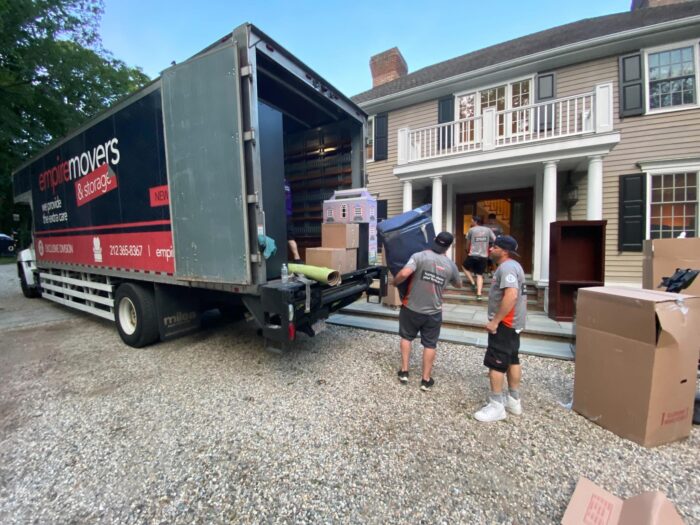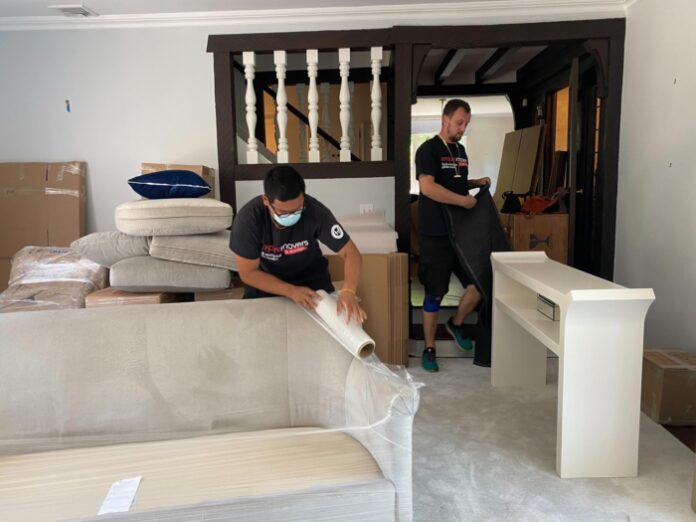Fine art necessitates gentle care and as little movement as possible throughout its lifespan. Art media may wear out, lightweight canvases may stretch, and the work may be ruined if not properly stored! Given that great art often has a high monetary value, it would be awful if a mistake or hurried action on your part damaged this asset — let alone the agony of a ruined work of art!
The good news is that you are not alone in your feelings. Discover ways to transport art on your own as well as how to find efficient art movers. Preserve your valuables and transport your fine art successfully.
What Exactly Is Fine Art?
This question has both a subjective and an objective answer. Subjectively, “fine art” is anything that a discriminating eye recognizes as art. Art is defined as anything that someone finds pleasing or that elicits an emotional response in them.
Fine art is something developed via a lot of work over time, or through the use of a very fine technique.
And excellent art can be defined objectively. Sculptures, paintings, drawings — fine art encompasses everything worth exhibiting or that could be created for an exhibition in a museum.
Fine art is made up of ancient, delicate, and expensive things. The older paper or canvas will need to be kept protected. Some have delicate protrusions or wires that must not be bent. Finally, many historic works of art cannot be exposed to extreme heat, cold, or humidity since the paint may begin to dissolve.
Beautiful Fine Art
It is ideal to try to emulate museums when it comes to transferring their treasures from place to place, whether you’re carrying a precious painting or a massive, detailed sculpture. This section will go over how museums utilize moving companies to protect their artwork.
First, ensure that the conditions in which your work will be shown are suitable for the art while still allowing for movement. The primary task of transporting fine art is to cause as little disruption as possible.
The first stage is to make a long-term investment in art protection. Second, ensure that everyone who is transporting the components is fully insured. Those who wish to transfer fine art must first complete substantial training before becoming licensed to do so. Observe great art being transferred; as the steps are taken, people clap heartily, because relocating good art is a form of art in and of itself!
To transfer your fine art yourself, you will most likely need a nice pair (or many) of white gloves, moving blankets, tethers, and a custom-made box. Furthermore, even if your magnificent work of art is small, carry it with two gloved hands. Request someone to assist in opening the doors.
You Will Require Assistance If Your Artwork Is Heavy or Large
When you’re finished, gently remove the artwork from where it was placed. Then inside a box or blanket stack (or both). Ensure that the work of art is packaged where it cannot move throughout the transit process.
The next phase is determined by how far you’re travelling! To save time, long-distance movers may try to combine the customized container with other moving products; if you move it yourself, you may have more options.
Plan to move the artwork yourself rather than mailing or shipping on a plane. The temperature inside a plane isn’t great for fine art. You will also be able to track your package.

It may be necessary to rent (or drive) your fine art to its new location. Have volunteers wait with the crate throughout the transfer to guarantee it doesn’t move.
Furthermore, keep in mind that proximity to your destination does not guarantee the safety of your artwork! Follow each step outlined above to bring your gorgeous creation to completion. After the art is safely placed in its new home, you can toast with a drink of champagne and your closest friends.
What Factors Should You Think About Before Hiring Fine Art Movers?
It is completely normal to choose not to move your fine art yourself; in fact, it may be better because you will be able to rest, and any errors or accidents that may occur will most likely be covered by either your insurance or the moving company’s insurance, depending on your case.
But, your task is not yet complete. Make sure you can trust a moving company before leaving your job to them! Let’s talk about the factors to consider while hiring fine art movers.
First and foremost, complete your assignment. Even if you think you’re dealing with one of the best moving firms, you could be duped! To avoid this, research internet reviews of your providers, call around for prices and get personal recommendations from friends and family who have used them.
It’s a good idea to think about whether you want to hire a moving company or a broker. Neither is perfect, but one is probably better for you and your move. Evaluate all of your options and weigh the benefits and drawbacks of each! It will not be a regrettable exercise.
If you’re using a moving company, consider how much effort they want you to accomplish. Certain moving companies take on packing and unpacking, while others focus just on shipping. Don’t take on more than you can handle when signing a contract.
What to Look for While Relocating Fine Art

Because your fine art is a significant investment, you want to ensure that the movers you hire to do an outstanding job. When selecting a fine art mover, keep in mind that the lowest bidder may be a swindler! Instead, go over all of the proposals and relocation costs. This will give you a good idea of what you’re getting for your money!
Aside from having the movers handle everything, there is another factor to consider when hiring someone to transfer your fine art. That is, as you may have guessed, moving insurance. Moving insurance is always a good idea, especially when dealing with valuable artwork. This is because your beautiful work is most likely quite pricey. You don’t want to lose that money if something goes wrong during the transfer.
It is critical to read the fine language on your moving insurance paperwork. Make sure you don’t nullify it by breaking the rules! Thankfully, the contract you signed must include all of the details, so make a large cup of coffee and carefully read it. If you learn that your insurance will only be honored if you use a specific type of moving company, it is in your best interest to hire that type of service.
All of these measures aren’t just to protect your money in the worst-case scenario. They are also for your comfort: if you are confident that you and your interests will be protected no matter what occurs during your relocation, you may be able to relax a little and enjoy the significant experience of relocating rather than agonizing over things you have already investigated.
Conclusion
Remember that you are putting in all of this effort so that you can display your amazing work of art in your new house! Think about how great it would be if you were not tempted to cut corners or act carelessly during the moving process. Throughout the moving procedure, you will be tempted to do so several times. Knowing why you’re doing it will help you focus on the task at hand, especially if your art is created and you can’t see it.
Moving great art requires a significant amount of effort, but it may be less work than creating the object in the first place! As with transporting pianos, plants, pets, or elderly people, you’ll want to take extra precautions.
Especially if you’re moving with children or large items like hot tubs or pool tables, expect a bumpy and entertaining ride! There are various factors to consider while moving heavy furniture or works of art, but the result will be well worth the effort.
Find a Home-Based Business to Start-Up >>> Hundreds of Business Listings.

















































